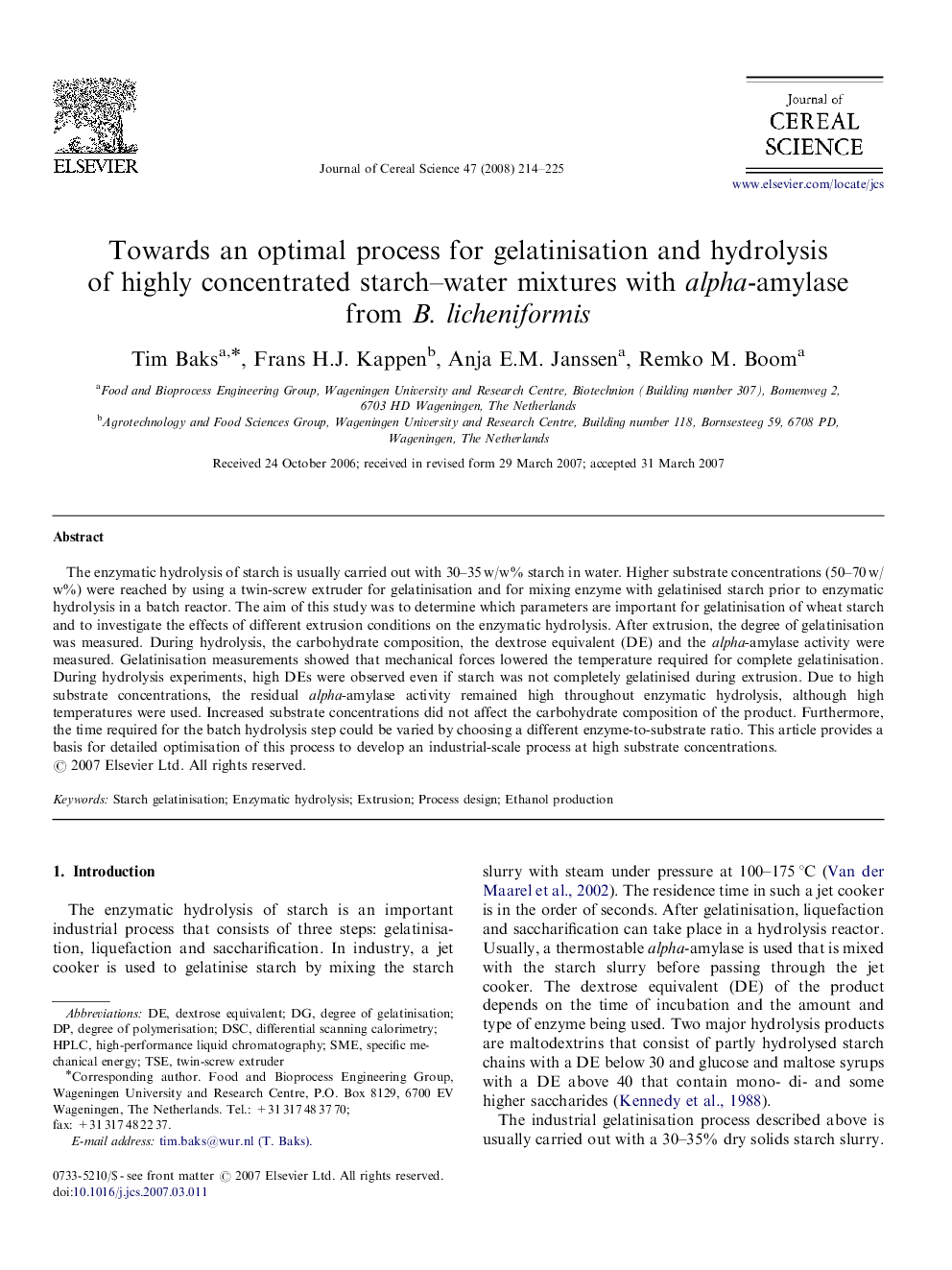| Article ID | Journal | Published Year | Pages | File Type |
|---|---|---|---|---|
| 4516639 | Journal of Cereal Science | 2008 | 12 Pages |
The enzymatic hydrolysis of starch is usually carried out with 30–35 w/w% starch in water. Higher substrate concentrations (50–70 w/w%) were reached by using a twin-screw extruder for gelatinisation and for mixing enzyme with gelatinised starch prior to enzymatic hydrolysis in a batch reactor. The aim of this study was to determine which parameters are important for gelatinisation of wheat starch and to investigate the effects of different extrusion conditions on the enzymatic hydrolysis. After extrusion, the degree of gelatinisation was measured. During hydrolysis, the carbohydrate composition, the dextrose equivalent (DE) and the alpha-amylase activity were measured. Gelatinisation measurements showed that mechanical forces lowered the temperature required for complete gelatinisation. During hydrolysis experiments, high DEs were observed even if starch was not completely gelatinised during extrusion. Due to high substrate concentrations, the residual alpha-amylase activity remained high throughout enzymatic hydrolysis, although high temperatures were used. Increased substrate concentrations did not affect the carbohydrate composition of the product. Furthermore, the time required for the batch hydrolysis step could be varied by choosing a different enzyme-to-substrate ratio. This article provides a basis for detailed optimisation of this process to develop an industrial-scale process at high substrate concentrations.
